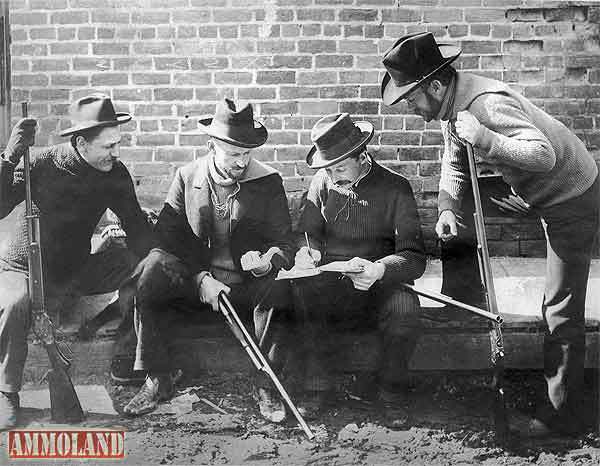
Boston, MA – -(Ammoland.com) – On November 26, 1926, John Moses Browning passed away in Liege, Belgium, at the age of 71.
Hailed today as the greatest arms inventor of all time, John came by his profession honestly: his father Jonathan was also a gunsmith, and it was in his father’s shop that John began tinkering with guns at a young age. Overshadowed by his son’s achievements, Jonathan was actually quite the designer himself. He created an early repeating rifle with a horizontal “harmonica” magazine – one of the first of its kind.
By the time John Moses was in his early 20s, he partnered with his brothers and created their own arms manufacturing company.
In 1879, John received a patent for a single-shot rifle. Once production began in earnest, it was an almost instant success in and around their local Utah community. Unfortunately, his father Jonathan died that same year, without ever seeing the tremendous success his son would achieve.
Within a few years, one of those guns had made its way east and into the hands of Thomas Gray Bennett, the Vice President of the Winchester Repeating Arms Company. He quickly purchased the manufacturing rights to the rifle, thus beginning a decades-long relationship that would prove to be incredibly fruitful for both parties involved.
The Browning-Winchester partnership provided Browning with the most valuable asset needed by an inventor: time. Winchester essentially bought anything and everything Browning patented, whether they produced it or not, simply to keep it from falling into the hands of a competitor. This gave Browning the money he needed so that he could spend his time working on new designs instead of having to worry about marketing existing arms.

In turn, the partnership provided Winchester with the rights to produce some of the most iconic arms of the late-19th and early-20th centuries, cementing their place at the forefront of the American arms industry. Just some of the Browning-designed arms produced by Winchester include the Models 1886, 1892, 1894, and 1895 lever-action rifles and the Models 1893 and 1897 pump-action shotguns.
John’s designs weren’t just limited to long guns, and a gentleman’s agreement between Winchester and Colt provided an opening for him to market his arms to the latter of the two. (Winchester had agreed to stay out of the handgun business while Colt agreed to stay out of the long gun business.) Outside of the United States, Browning had partnered with Fabrique Nationale to make a blowback-operated, semi-automatic pistol that began production in 1899.

At the dawn of the 20th century, Colt released the first semi-automatic pistol available in the US, and it was, of course, a Browning design. Just a little more than a decade later, the partnership would result in the Colt Model 1911 semi-automatic pistol. It would go on to be the standard US military sidearm for the next 74 years.
Backing up a bit to 1902, Bennett and Browning ended their partnership over what would later become the Auto-5 self-loading shotgun. After an untimely death at Remington, Browning headed overseas for the first time to offer the gun to Fabrique Nationale. This would be the first of many, many ocean voyages in the following two-and-a-half decades. Browning would come to see Liege as sort of a second home, spending countless hours at his FN workbench, developing new ideas.
Browning died of heart failure while at his workbench; he was tinkering with the design that would eventually be refined into the Hi Power semi-automatic pistol.
Plenty of people claim that they want to die doing what they loved. John Moses Browning was one of the very few who actually did just that on November 26, 1926.
About Logan Metesh
Logan Metesh is a historian with a focus on firearms history and development. He runs High Caliber History LLC and has more than a decade of experience working for the Smithsonian Institution, the National Park Service, and the NRA Museums. His ability to present history and research in an engaging manner has made him a sought after consultant, writer, and museum professional. The ease with which he can recall obscure historical facts and figures makes him very good at Jeopardy!, but exceptionally bad at geometry.